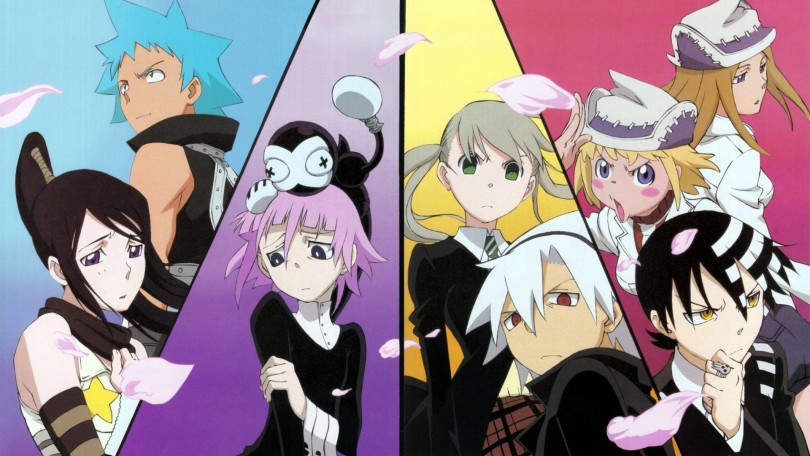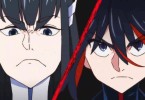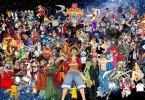As with any other commodity, manga has long been marketed in Japan and abroad according to demographics. For decades, longstanding categories such as Shōnen (for boys) and Shojo (for girls) have helped authors and publishers cater to their audiences while making it easier for consumers to select their desired type of reading material. Of course, as time invariably passes, that which was once categorical tends to become less-rigidly defined; inevitably, across all systemic structures we humans devise, change comes sooner or later. In short, where there are norms, there will be exceptions—and where there are established modes of operation, there will also eventually be aberrations. Society is a living organism, continuously evolving and adapting.
But in fields of storytelling (e.g. in the realms of literature and film), where necessity is not always the mother of invention, these seemingly innocuous divergences are often more profound than a mere superficiality. Indeed, far from being one-off anomalies, it is often the case that the black sheep of any given season ends up being a trend setter by either redefining a genre (such as what Puella Magi Madoka Magica (2011) did for programming of the magical girl variety) or almost single-handedly creating one all on its own (as the space western Cowboy Bebop (1998) audaciously boasts within its own opening sequence). As such, it ought to come as little surprise that the tried-and-true definitions of cultural constructs like Shōnen and Shojo would also change. (And just as we were all getting used to them!)
With the turning of the century now distanced enough from the present to be observable while still being close enough to be recalled in recent memory, I have already noticed some profound changes occurring in the realm of twenty-first century anime and manga. As both Western nations and Japan alike reap the rewards of the late-twentieth century’s advent of feminism, the rigidity of male and female demographics has waned. Traceable in no small part to the lightning-fast advent of technology (namely the internet), in layperson’s terms, whether focusing on what we watch, wear, or do, it is becoming increasingly acceptable for boys to like ‘girly’ things and vice versa. The world of Japanese entertainment, particularly its major artistic exports like anime and manga, is no exception to this shift in the cultural climate.
Around the anime boom of the 1990s (a time when a high point of anime production and localization instilled a love for the medium in an entire generation across the globe), works like Akira Toriyama’s Dragon Ball (1984–1995) and Yoshihiro Togashi’s Yu Yu Hakusho (1990–1994) helped solidify the conceptual ideal for a Shōnen product while carving a template to be followed by their eventual successors—namely Noriaki Kubo’s Bleach (2001–2016), Masashi Kishimoto’s Naruto (1999–2014), and Eiichiro Oda’s One Piece (1997–).
Conversely, titles such as Naoko Takeuchi’s Sailor Moon (1991–1997) and Rumiko Takahashi’s Inuyasha (1996–2008) quickly became beloved by girls the world over for featuring capable female protagonists and an emphasis on relationships between characters within the story. Thus, through no ulterior machination on the part of their creators, an informal line in the sand was created through which stereotypes were enforced: muscle-bound fights for boys and dramas with interwoven narratives for girls.
Because the previously mentioned ‘big three’ (Bleach, Naruto, and One Piece) ran well into the early ‘00s in both written and animated form, and because many would-be hybrid alternatives which fit squarely in neither category went down intellectual cul-de-sacs or commercial dead ends (e.g. Tenchi Muyo! (1992) which inadvertently spawned the harem genre as we know it), at first it seemed that the new millennium brought nothing truly novel with it—more of the same, essentially. But as we now know, thankfully this has hardly been the case! For one thing, the authors of some of the most prominent Shōnen titles have lately been women (Kazue Kato and the manga-turned-anime Blue Exorcist (2009–), for example), demonstrating that the beneficial lack of emphasis on archaic gender norms applies to creators just as much as it does to consumers.
Following in the footsteps of giants like Rumiko Takahashi—who, despite her ubiquity with Shojo and Seinen publications (the latter format aimed traditionally at adult men), also contributed to the Shōnen demographic albeit in unconventional ways via Urusei Yatsura (1978–1987) and Ranma ½ (1987–1996)—Hiromu Arakawa’s Fullmetal Alchemist (2001–2010) has already garnered critical acclaim and popular reception, and boasts not one but two separate animated adaptations. While it has enough action to satiate any young person’s appetite for adventure and violence, Fullmetal Alchemist also emphasizes complex emotional bonds and repressed, psychological pain as the impetus for the protagonist’s journey (as opposed to the approach of Dragon Ball’s carefree hero Goku and other equally hard-headed, loveably oafish characters found throughout various works). Basically, it contains the perfect combination of ingredients for attracting a wide range of male and female viewers.
The pervasiveness of multifaceted works comprising this new generation of Shōnen indicates several key points: for one thing, elements that would previously have been avoided (or, simply weren’t as relevant) for any given demographic in days past are often spotlighted rather than downplayed. Also, as more creators continue to figuratively color outside the lines of their respective publications’ de facto standards, more identifiable facets traditionally associated with one particular target audience will unavoidably bleed over into the other. Consequently, as these lines are increasingly blurred, consumers become increasingly unconcerned with labels such as Shōnen or Shojo and are more willing to explore new territories while also tolerating some of the vestigial elements of a given demographic, genre, or medium.
As with all things, there is a duality to be observed: while the ramifications of these new developments are, in my opinion, generally good, there is also a potential downside. Simply put, though young adults of both genders appear to be more readily consuming the same product, it seems that the aforementioned burden of conformity—that is, tolerating vestigial elements, as I put it—is often borne by females with a greater frequency than their male counterparts.
Case in point: the prevalence of series like Hiro Mashima’s Fairy Tail (2006–) indicates that girls don’t seem to mind increasing dosages of (predominantly) male-centric fan service (a clever marketing ploy to attract the masculine gaze yet, as I have alluded to in this context of demographic crossover, an ‘evolutionary leftover’ for all intents and purposes); while on a more hopeful note, the enigmatic One’s recent hit One-Punch Man (2009–) proves that young males can tackle inextinguishable questions of meaning and purpose (i.e. dilemmas that cannot be solved with punching) without having an existential crisis. Though these examples are hardly universal, they do beg some serious questions: Is this ‘crossover’ a proverbial equivalent exchange? Or is one party seemingly dominating the other? Are the cream-of-the-crop ingredients of both demographics coinciding to create genuinely more inclusive material? Or is Shōnen merely incorporating the best aspects of Shojo while maintaining its ecchi elements with impunity?
Operating under the obvious presumption that females have as much prerogative to watch what they chose as males, the feminist perspective poses yet more postulations: Should female spectators simply accept the exhibitionism of female characters in these new productions in order to feel included within the mainstream of anime? Or are they obligated to express concern over possible misappropriations of femininity for the advancement of male chauvinism? Perhaps anxieties over these topics are a tad overinflated; like reactions to the controversial Kill la Kill (2013), I suspect any answers to these questions would vary greatly depending on who is asked. But again, much like said Studio Trigger production, such instances serve as yet another example of the perpetual catch-22 in which women the world over find themselves mired: expression versus exhibitionism, owning one’s sexuality versus playing into patriarchal hegemony, et cetera.
In any event, writers like Atsushi Ohkubo endow me with a great deal of hope for the future. In a similar vein to Fullmetal Alchemist, Soul Eater (2004–2013) not only spins well-worn edifices of philosophy and religion into a fresh premise, but also demonstrably proves that the best of Shōnen—its bravado, sense of adventure, and yes, arguably even its small doses of fan service—can be combined with the best that Shojo has to offer—traits like emotional depth between characters and challenges of introspection to spur maturation—to create memorable and truly distinct works. In the case of the animated version of Soul Eater specifically, the fact that versatile director Takuya Igarashi—whose long career in anime includes several prominent Shojo titles like Sailor Moon (1992–1993)—was behind the reigns no doubt partially accounts for this stylistic blending of attributes. If authors and production companies continue to seek ideal avenues for achieving a lasting resonance with its wide base of male and female patrons, I can think of no finer template than Soul Eater. Its young protagonist Maka Albarn faces challenges unique to herself as an individual, as opposed to stereotypical ‘women’s issues’ disingenuously employed as a marketing scheme.
Her femininity is neither spotlighted nor downplayed, and her non-sexualized, overall character design is outright revitalizing in a cultural atmosphere usually fraught with raunchy depictions of the female form. And the manner in which intimacy between partners is portrayed not only gives impressionable viewers a roadmap for how healthy interactions between friends of different sexes can occur, but also provide a breath of fresh air to jaded theorists like me who have too many inane titles already under their belt.
With the 2010s now in full swing, I believe it will be both entertaining and enriching to sit back and observe these demographics and others as they continue to grow and interweave within the realms of anime and manga. (Bear in mind that change does not occur exclusively between Shōnen and Shojo: throughout its extensive run amidst an ever-changing outside world, Hirohiko Araki’s Jojo’s Bizarre Adventure (1987–) has gone from sitting squarely within the purview of Shōnen to often being categorized as a Seinen publication.) Will these demographical constituents change as time presses ever onward? The answer is most assuredly yes—but precisely how these molds will be broken and redefined is still anyone’s guess. But whether it is commercial classification on the part of publishers or formal categorization by critics, don’t let anyone other than yourself sway your interests. If a certain manga looks appealing, read it; and if a particular anime is captivating, by all means watch it. To borrow amiable food critic Andrew Zimmern’s catchphrase extremely out of context, “If it looks good, eat it!”
© 2016
Originally posted here.






